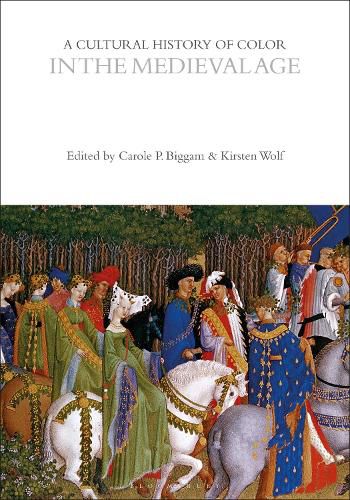Readings Newsletter
Become a Readings Member to make your shopping experience even easier.
Sign in or sign up for free!
You’re not far away from qualifying for FREE standard shipping within Australia
You’ve qualified for FREE standard shipping within Australia
The cart is loading…






A Cultural History of Color in the Medieval Age covers the period 500 to 1400. The medieval age saw an extraordinary burst of color - from illuminated manuscripts and polychrome sculpture to architecture and interiors, and from enamelled and jewelled metalwork to colored glass and the exquisite decoration of artefacts. Color was used to denote affiliation in heraldry and social status in medieval clothes. Color names were created in various languages and their resonance explored in poems, romances, epics, and plays. And, whilst medieval philosophers began to explain the rainbow, theologians and artists developed a color symbolism for both virtues and vices.
Color shapes an individual’s experience of the world and also how society gives particular spaces, objects, and moments meaning. The 6 volume set of the Cultural History of Color examines how color has been created, traded, used, and interpreted over the last 5000 years. The themes covered in each volume are color philosophy and science; color technology and trade; power and identity; religion and ritual; body and clothing; language and psychology; literature and the performing arts; art; architecture and interiors; and artefacts.
Carole P. Biggam is Honorary Senior Research Fellow in English Language and Linguistics at the University of Glasgow, UK. Kirsten Wolf is Professor of Old Norse and Scandinavian Linguistics at the University of Wisconsin-Madison, USA.
Volume 2 in the Cultural History of Color set.
General Editors: Carole P. Biggam and Kirsten Wolf
$9.00 standard shipping within Australia
FREE standard shipping within Australia for orders over $100.00
Express & International shipping calculated at checkout
A Cultural History of Color in the Medieval Age covers the period 500 to 1400. The medieval age saw an extraordinary burst of color - from illuminated manuscripts and polychrome sculpture to architecture and interiors, and from enamelled and jewelled metalwork to colored glass and the exquisite decoration of artefacts. Color was used to denote affiliation in heraldry and social status in medieval clothes. Color names were created in various languages and their resonance explored in poems, romances, epics, and plays. And, whilst medieval philosophers began to explain the rainbow, theologians and artists developed a color symbolism for both virtues and vices.
Color shapes an individual’s experience of the world and also how society gives particular spaces, objects, and moments meaning. The 6 volume set of the Cultural History of Color examines how color has been created, traded, used, and interpreted over the last 5000 years. The themes covered in each volume are color philosophy and science; color technology and trade; power and identity; religion and ritual; body and clothing; language and psychology; literature and the performing arts; art; architecture and interiors; and artefacts.
Carole P. Biggam is Honorary Senior Research Fellow in English Language and Linguistics at the University of Glasgow, UK. Kirsten Wolf is Professor of Old Norse and Scandinavian Linguistics at the University of Wisconsin-Madison, USA.
Volume 2 in the Cultural History of Color set.
General Editors: Carole P. Biggam and Kirsten Wolf